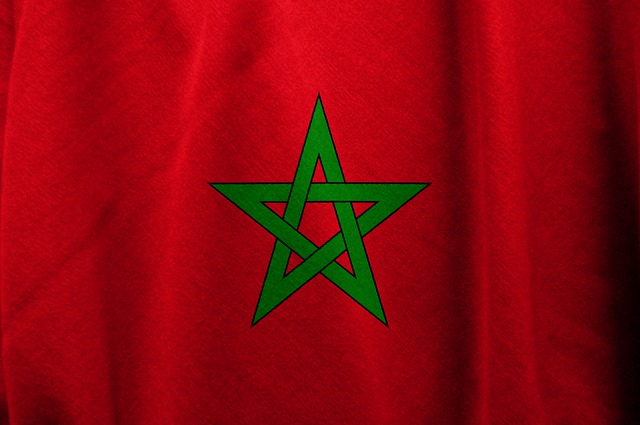Who are the Moroccan People?
Their religion is close to the Arab world, and their traditions resemble those of Europe in no small measure. There is a subtlety and a special understanding of the world that they bring to their customs. Who are the Moroccan People and what have they gone through in their history?

For many travelers, Morocco seems not just a distant and exotic country, but also a repository of the past in modernity. This is true: next to the latest inventions of mankind here you can find traditions that have existed for several thousand years. In such a harmonious and challenging combination is the merit of the local population.
The first settlements in the Moroccan lands have appeared about XV century BC, although many researchers suggest that this figure is inaccurate, and the first people were here much earlier. One of the first peoples to inhabit the territory of Morocco were the Berbers, who still live in the oases.
A few centuries later, the Moroccans encountered the first foreigners. The Phoenicians came to them and began to build the cities and the ports they needed on the coasts. After the arrival of the Carthaginians, the Phoenicians had to give in, but the arrival of Roman rule brought much war and destruction.
Only since the first century AD has life in the region become calmer. The Romans called the Moroccan People the Moorish, considering their territory part of the great empire. At this time the local population is actively engaged in trade, building cities and settlements.
Changes were also taking place in terms of religion. Christianity is preached in Morocco, but the locals choose one of its heretical trends, rejecting the classical creed.
Such a lull does not last long on Moroccan soil; soon the barbarians begin to make raids on the Roman Empire, and after its fall, they gradually come to all its corners. Then the Moroccans find themselves imprisoned in the territory of a confrontation between two mighty forces, the barbarian invaders and the Byzantine Empire. The conflict is resolved in favor of the latter, but Byzantine power does not last long. The Arab conquerors established Islam on these lands, subjugating the indigenous population. A separate state is even established for a brief period, but it disintegrates after a century, breaking up into sections ruled by local dynasties.
The second half of the sixteenth century is considered the heyday of Morocco. The opposing regions of the country unite, and this promotes the development of architecture and cultural direction. In addition, many Moors come from the Spanish lands, who become a labor force and increase the population of the areas.
In the eighteenth century, the situation heated up because of the opposition of three powers. Britain, France, and Spain put enormous pressure on the inhabitants of the country, taking a long time to decide which of them owned the territory. In the end, the British yield and Moroccan territory is divided between the other two competitors, with the French retaining the “lion’s share” of Morocco.
Such historical upheavals have contributed to the development of a heterogeneous culture and different linguistic dialects. Moroccans speak Arabic, but most of them also speak French and Berber. At present, the number of this people reaches almost 15 million.
Traditions of the Moroccan People
In general, Morocco combines features of the Arab and European worlds. This interesting combination has affected both the cultural sphere and the traditions of the Moroccan People. For example, the hospitality of these people is one of the main distinguishing features. A guest in a Moroccan home will be treated to the finest, seated in the most honorable place and surrounded with attention and care. As in many European countries, the Moroccans have a custom to leave their shoes on the threshold, but they go barefoot in the house. At the same time, the invited guest should not come without gifts to the hosts. Souvenirs or sweets are perfect.
Many tourists are surprised by the Moroccan holiday table. There are absolutely no cutlery on it. According to tradition, they are not needed. The traditional meal, couscous, made from cereals, must be eaten with the hands, gently grasping with three fingers of one hand. Before and after eating it is necessary to wash your hands, for which two containers of water are served.
Moroccans are very fond of hearty conversations over tea. Remarkably, they never drink this drink from large mugs – it is believed that the best tea is hot and fragrant. That is why one person can drink more than five small cups of freshly brewed tea at a tea party.
Another revered product is bread. It is not customary to eat it hastily and in large quantities. According to Moroccans, such treatment is disrespectful to the sacred food.
According to Moroccan People beliefs, it is not customary for Moroccan to show their romantic feelings in public. Therefore, kissing or hugging in public would be considered bad form. There are also a lot of requirements for appearance, especially for women. Moroccan women cover the whole body, and on the head tie a scarf. This perfectly suits the local climate, as well as the observance of the rules of decency. Short or open clothing is considered vulgar and inappropriate.
Another prohibition for Moroccan People is alcohol. According to their religion, they are not allowed to drink alcohol, so it is only offered to tourists. Even on holidays and during family celebrations, Moroccans drink their favorite tea.
The Moroccans are an interesting people with a complicated history. Over the centuries, power in their land has changed, bringing both troubles and opportunities for prosperity to the region. Today’s Moroccans are open-minded, outgoing and entrepreneurial. Because of these qualities and innate ingenuity, they have survived the whirlwind of events and continue to be a distinctive and unique people. Fore more information contact us
Comments